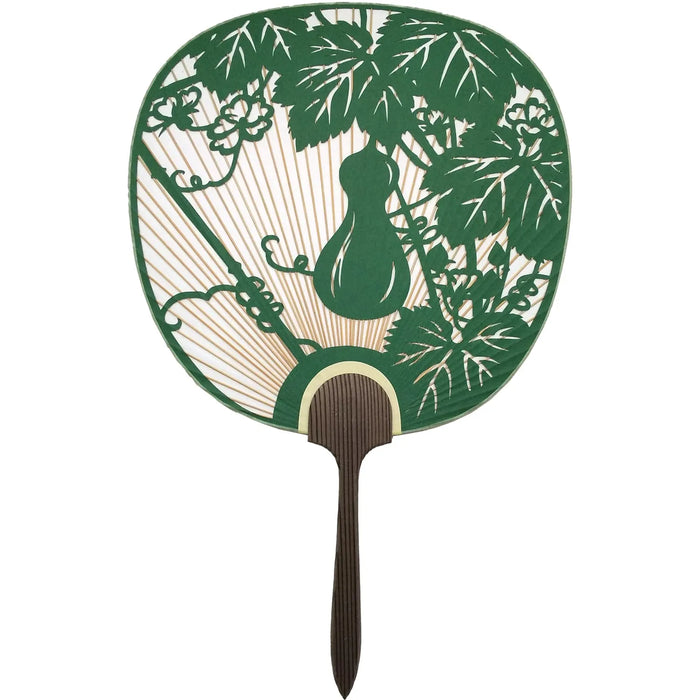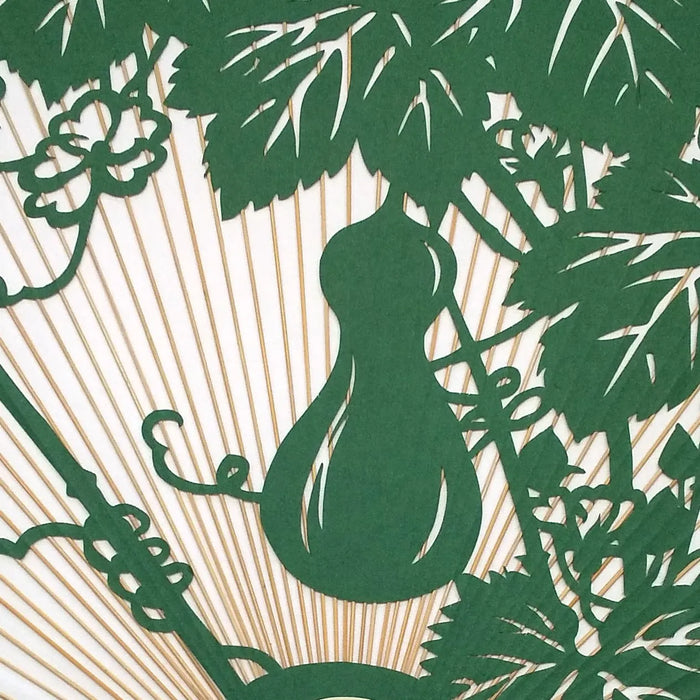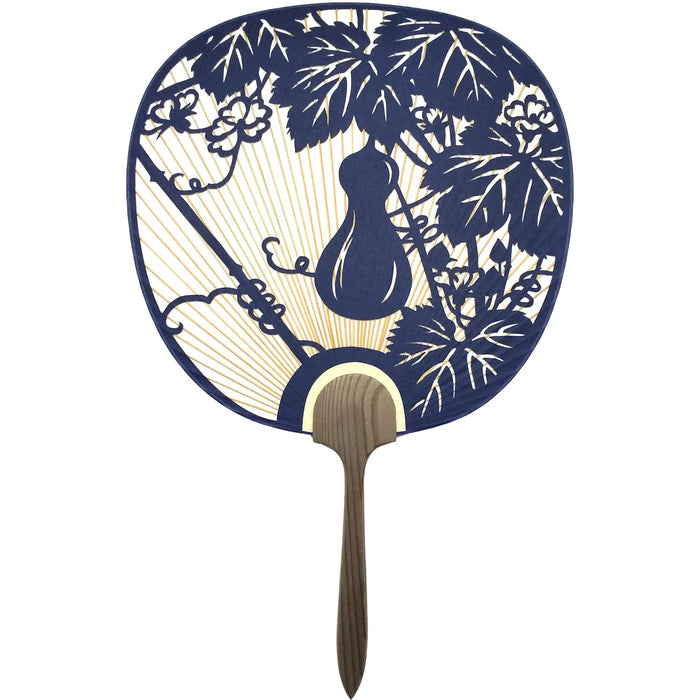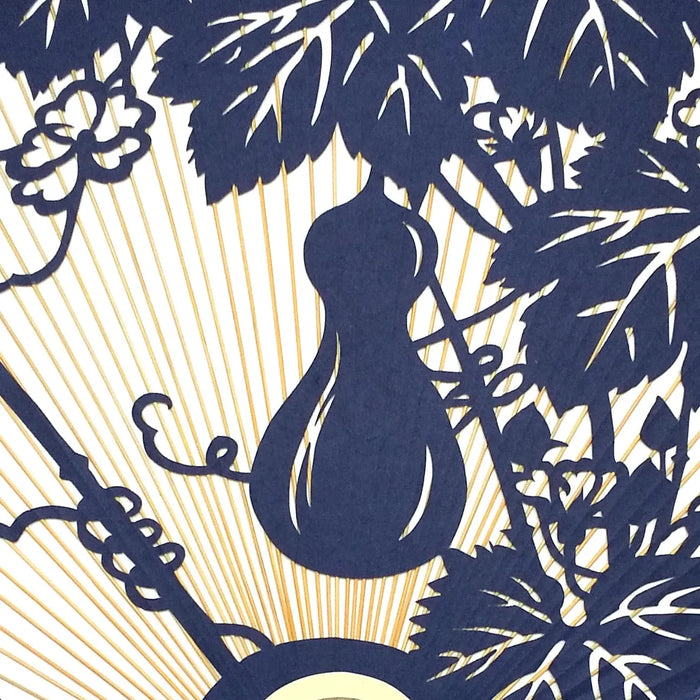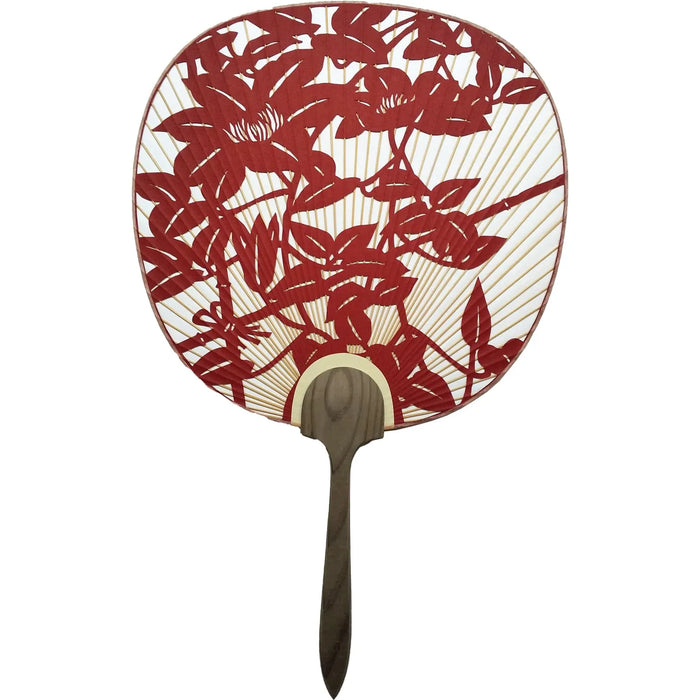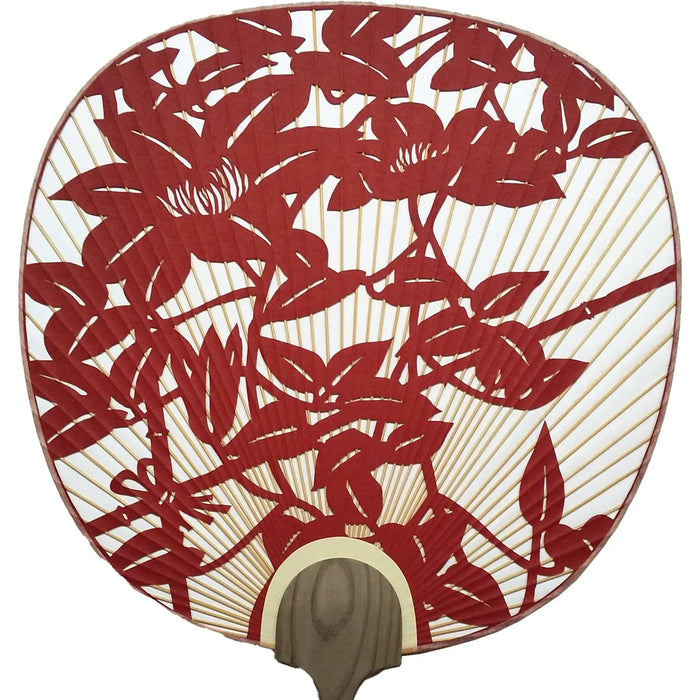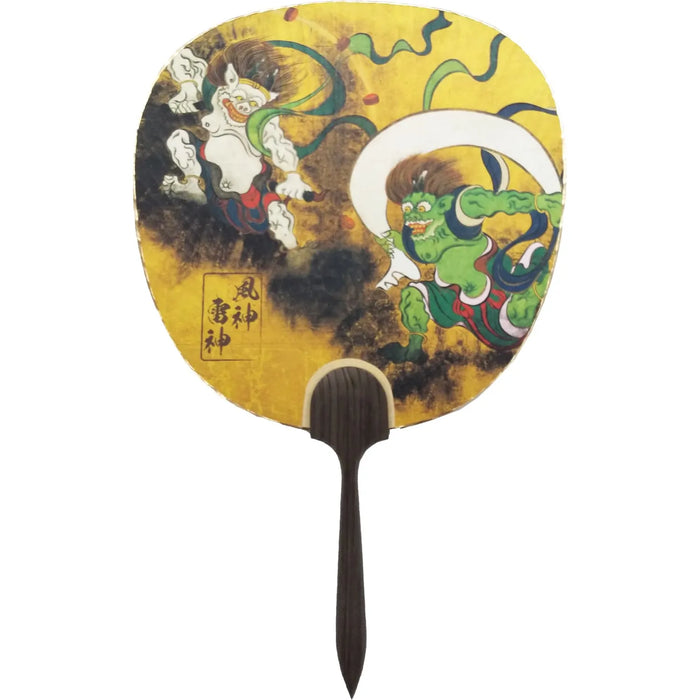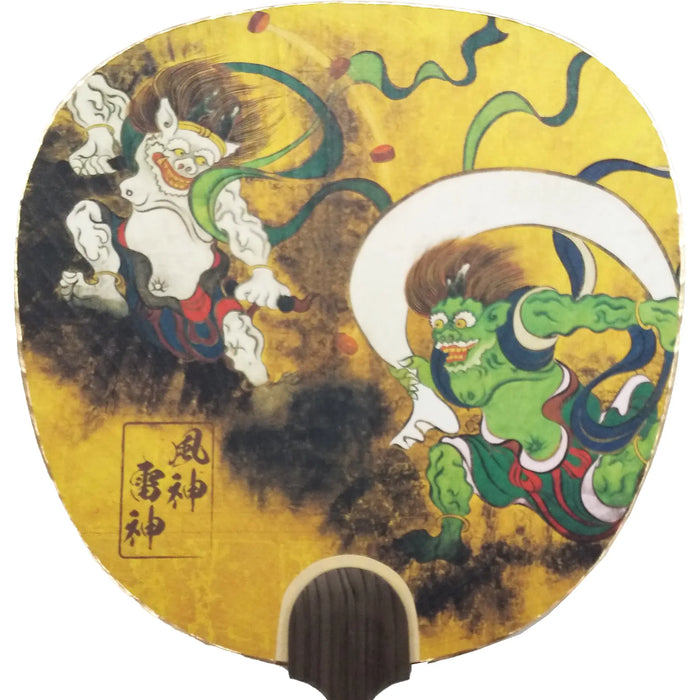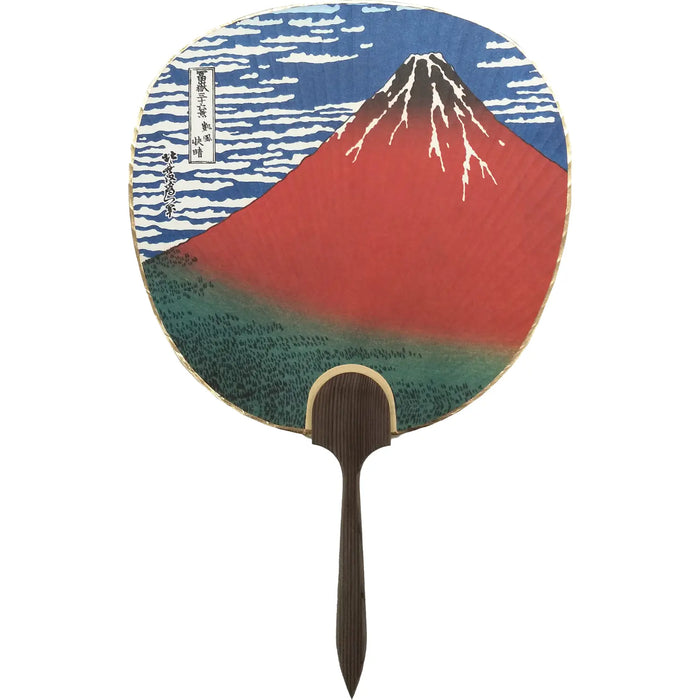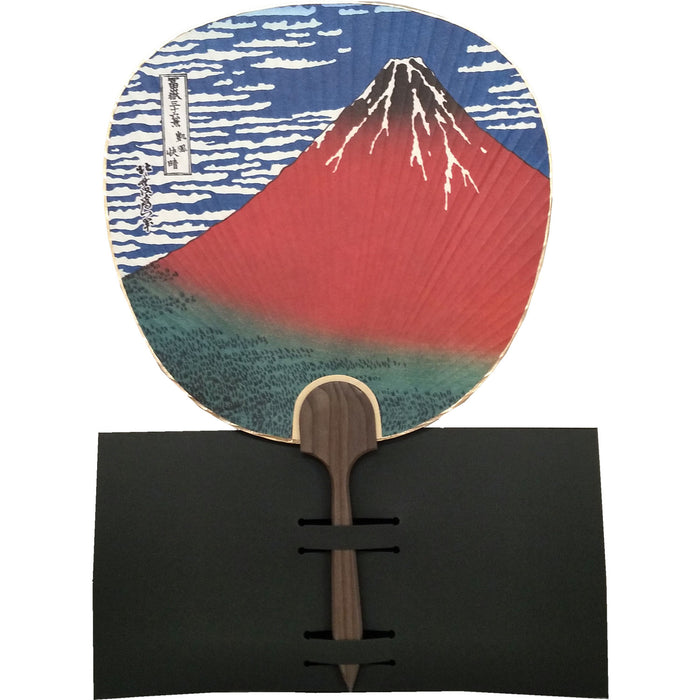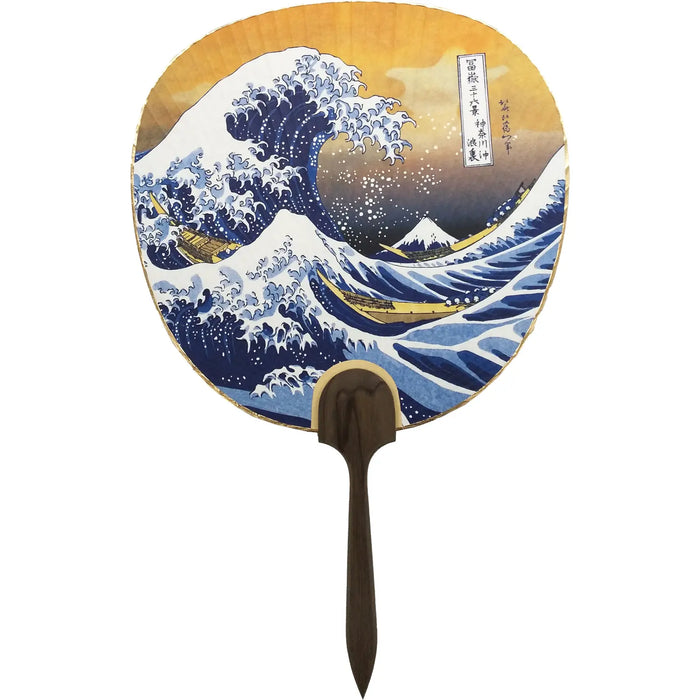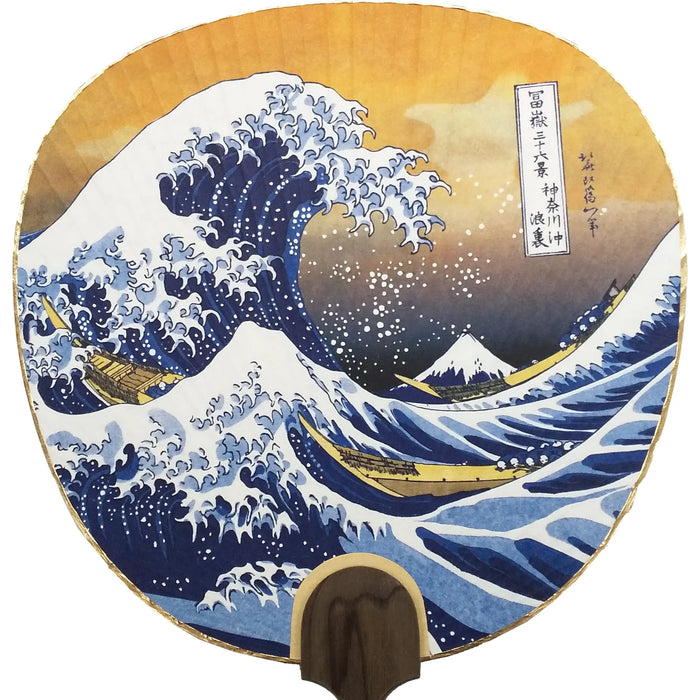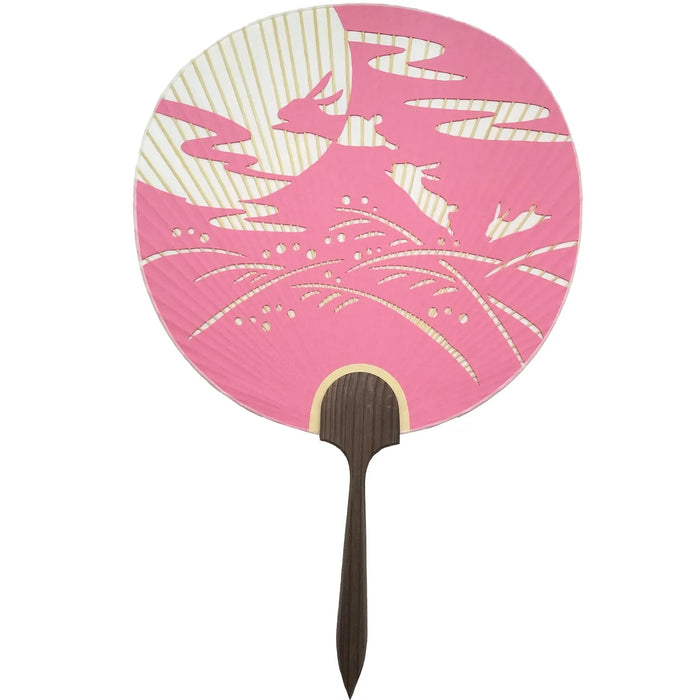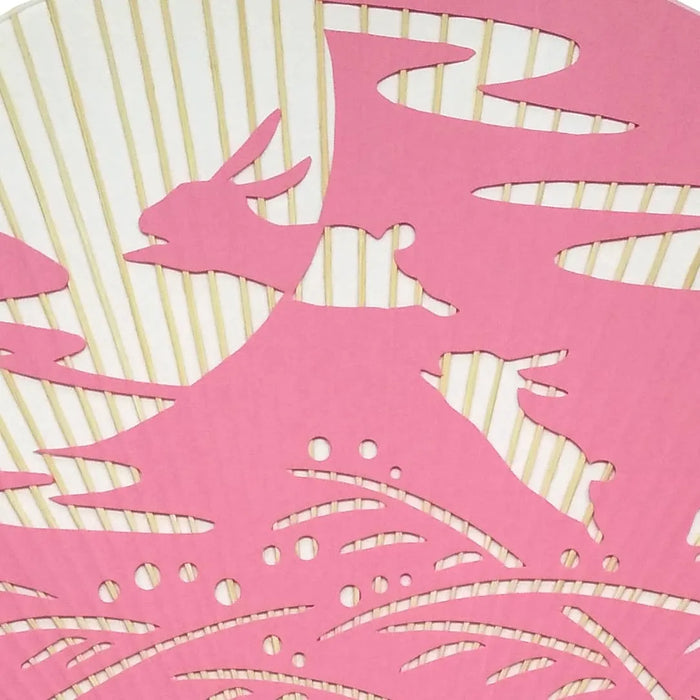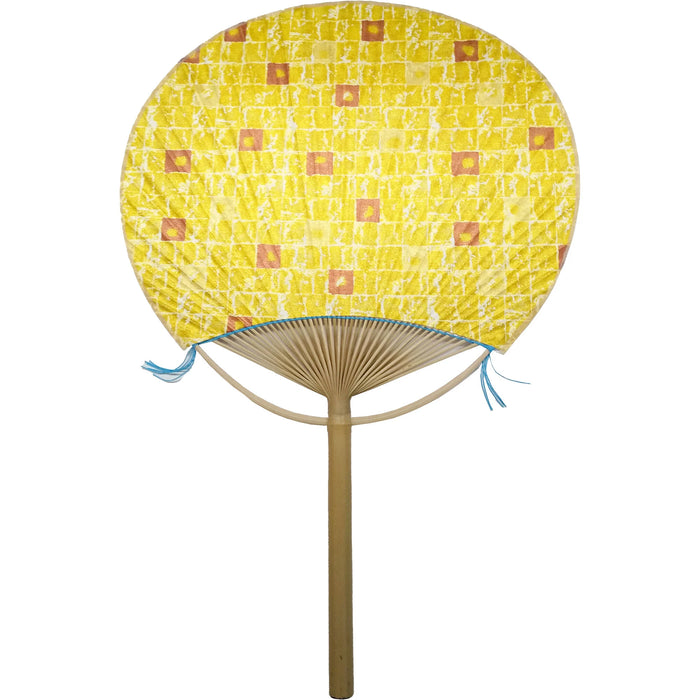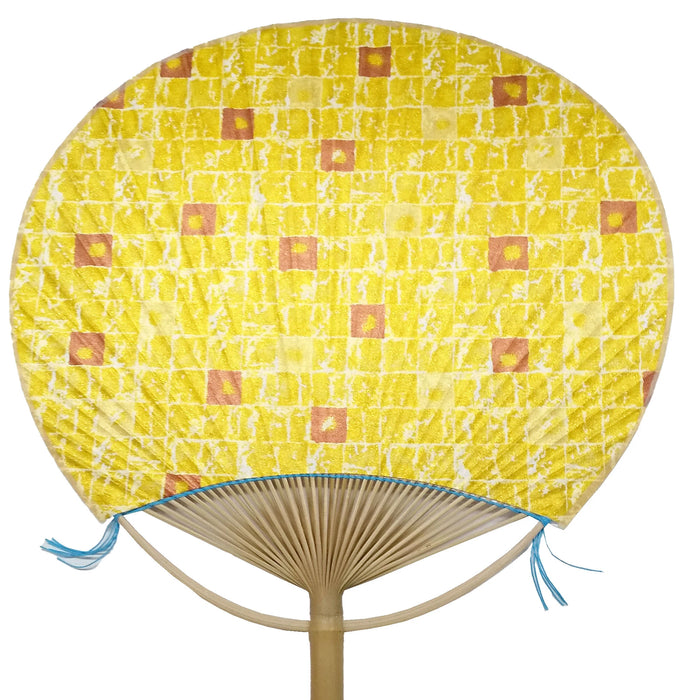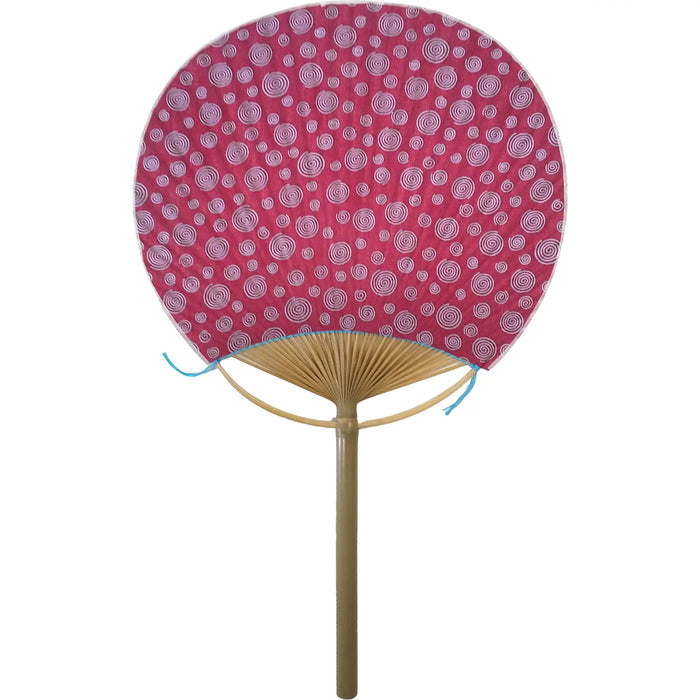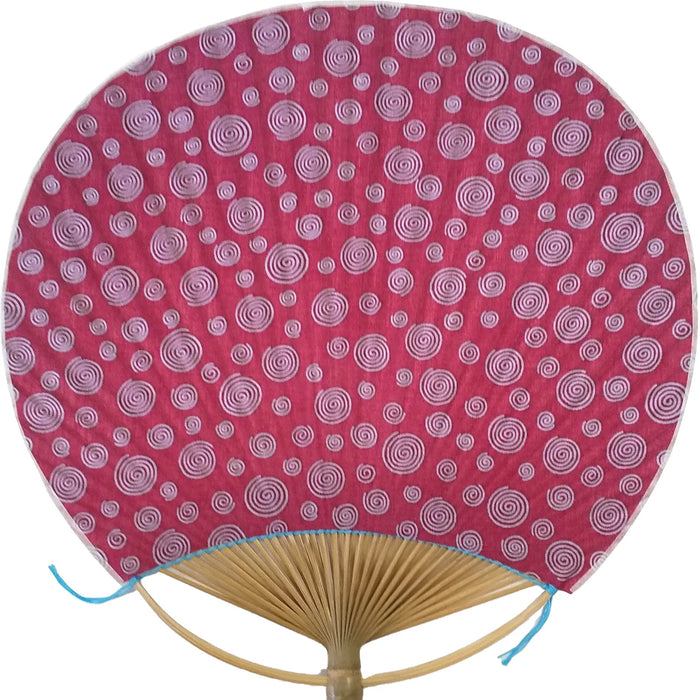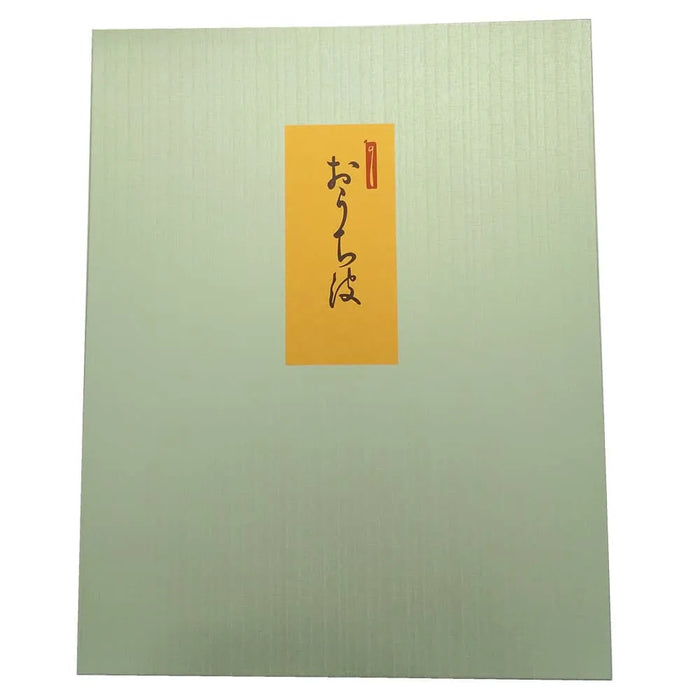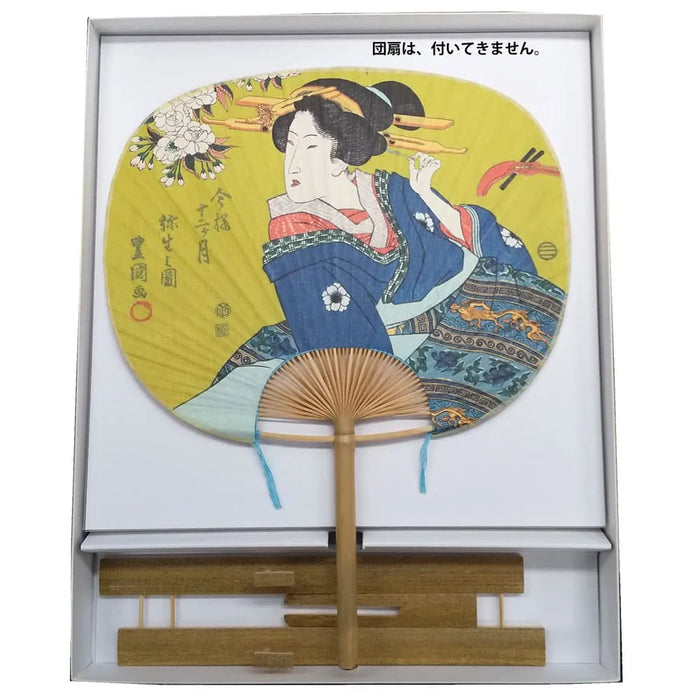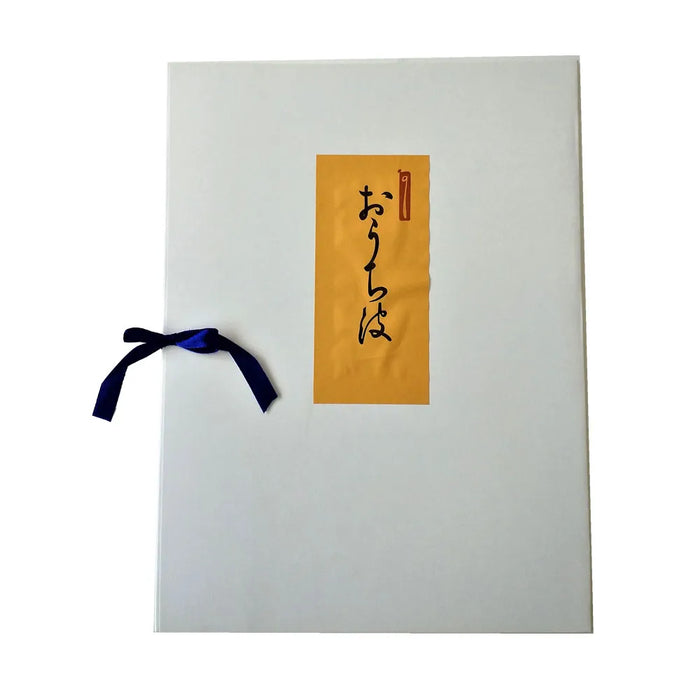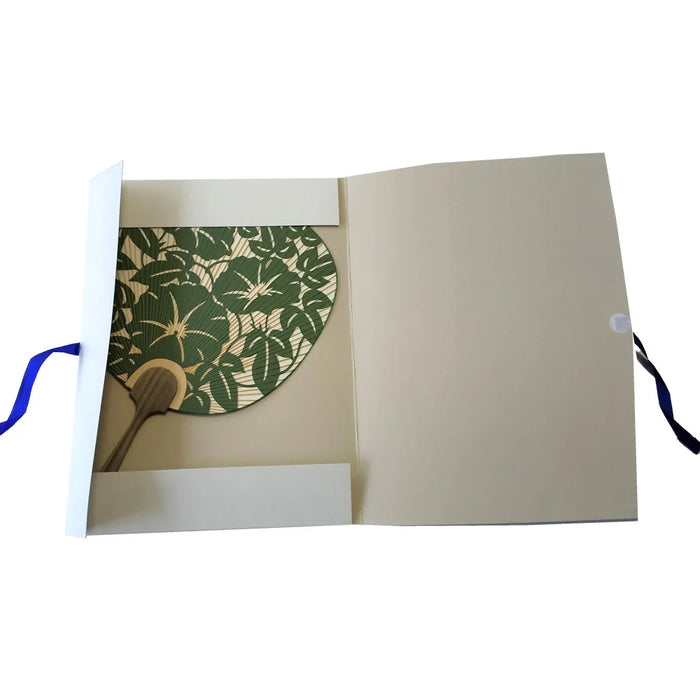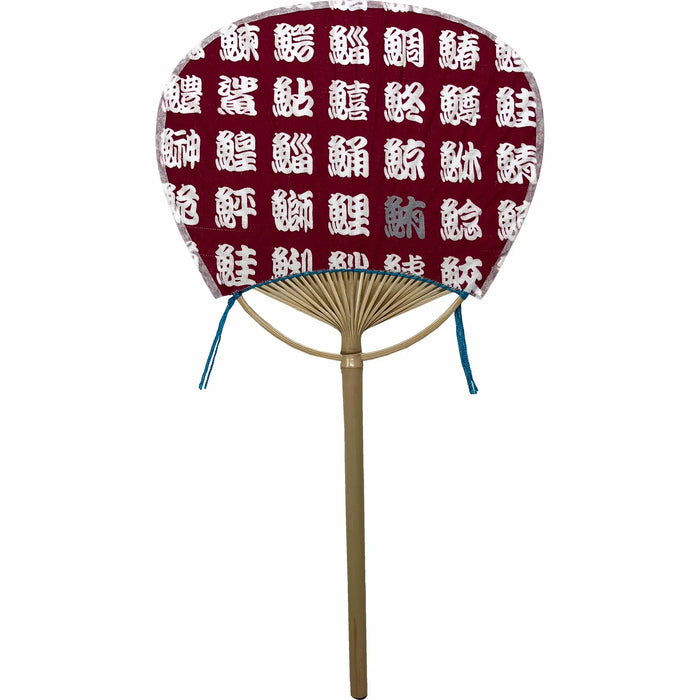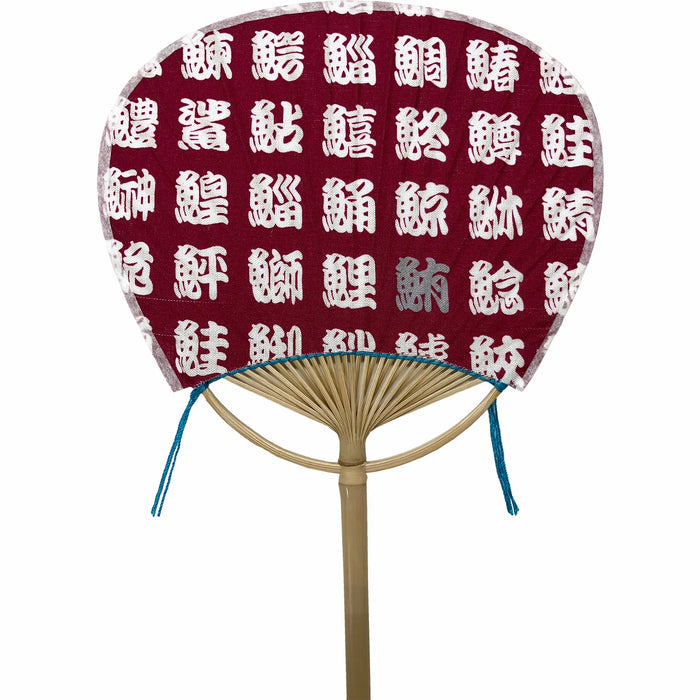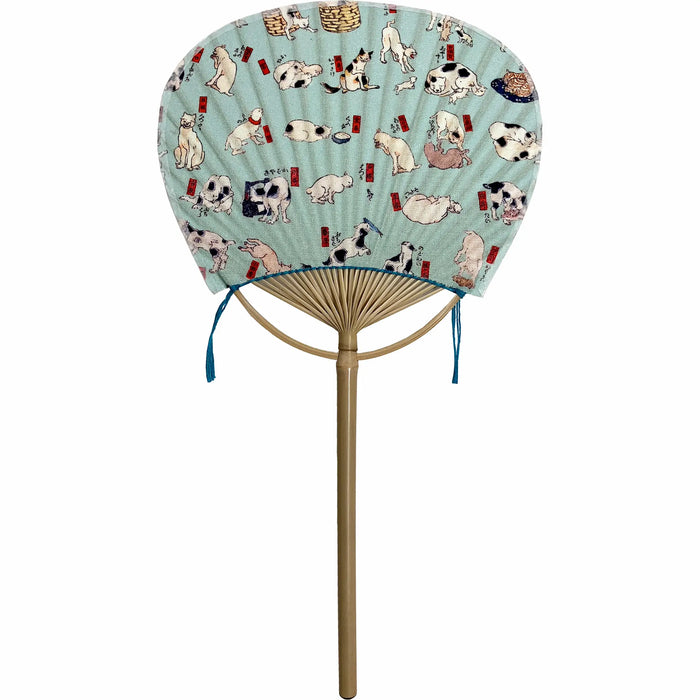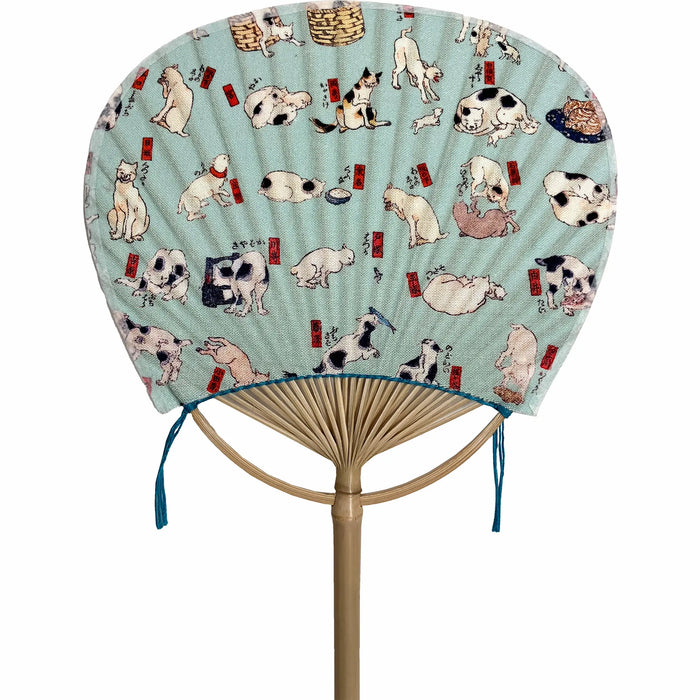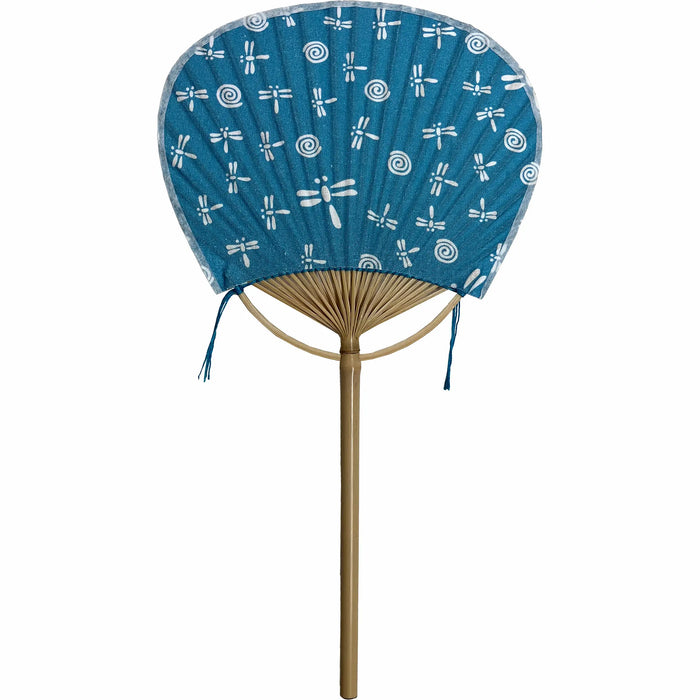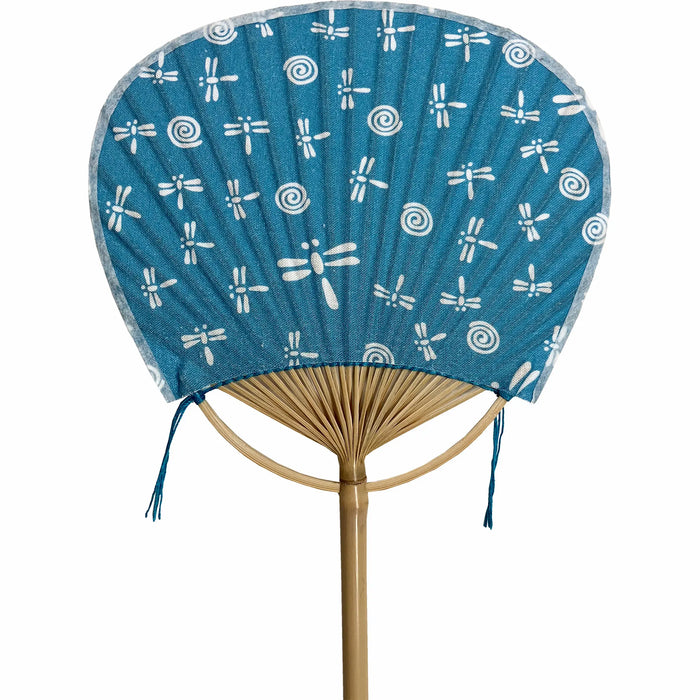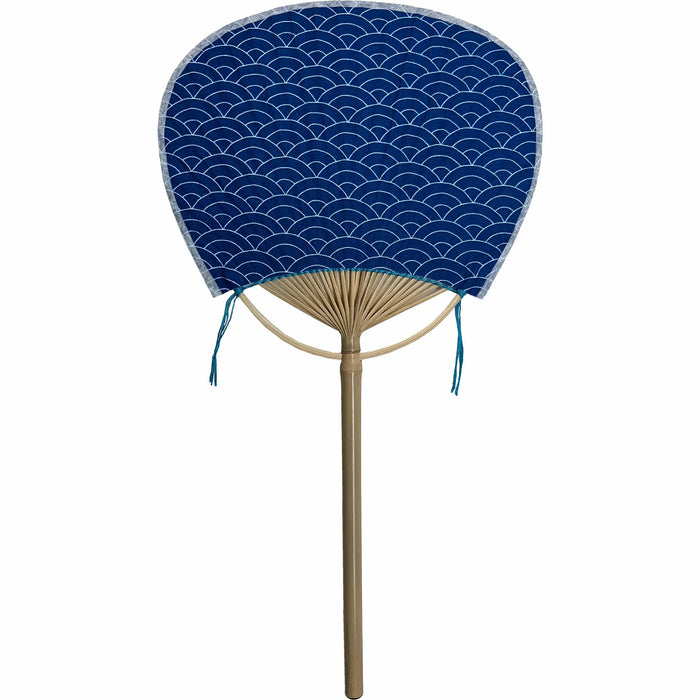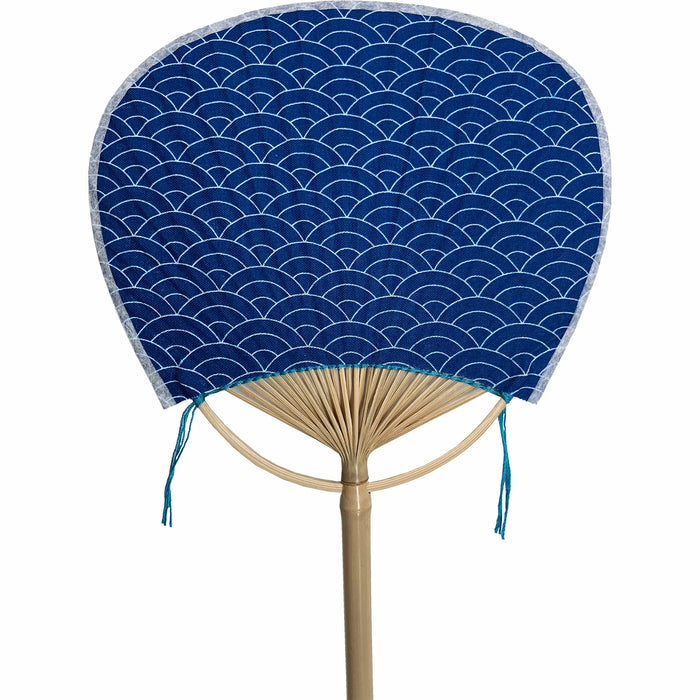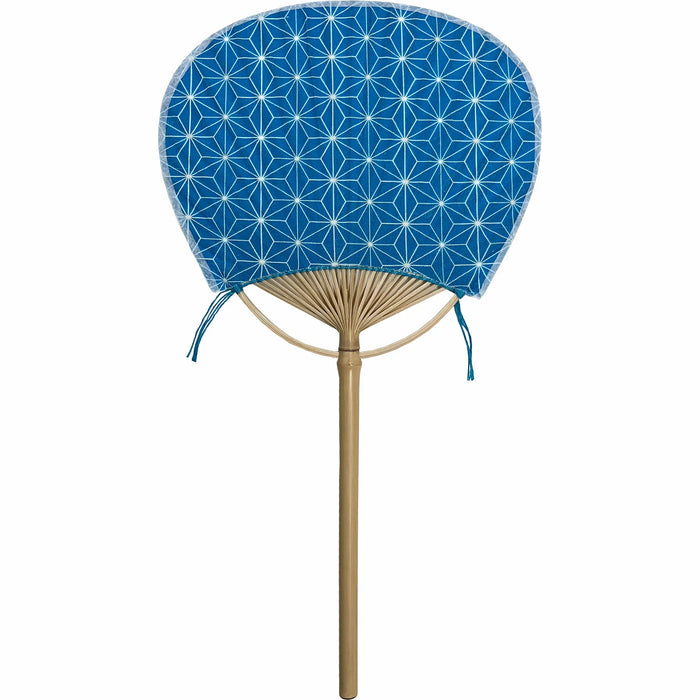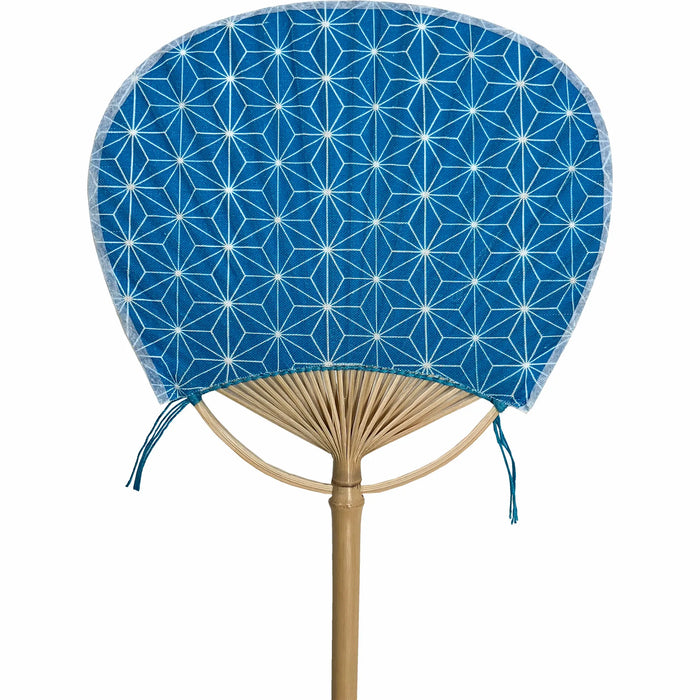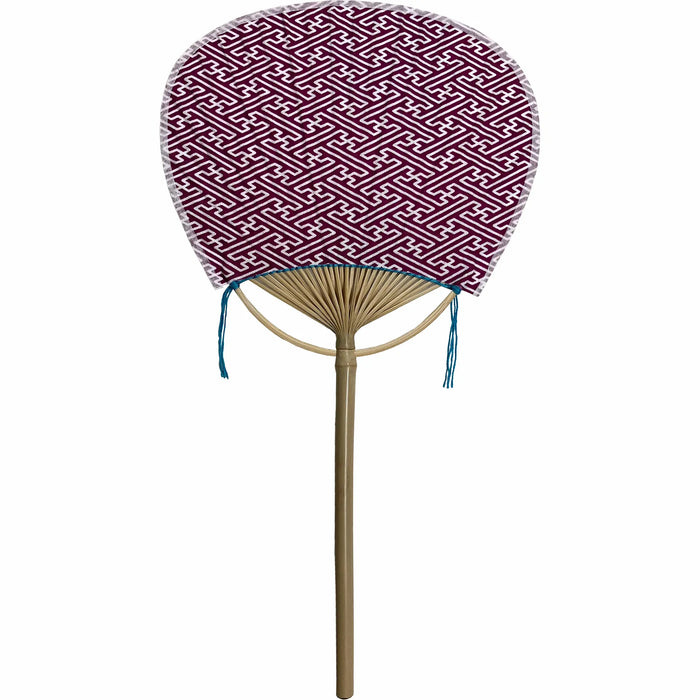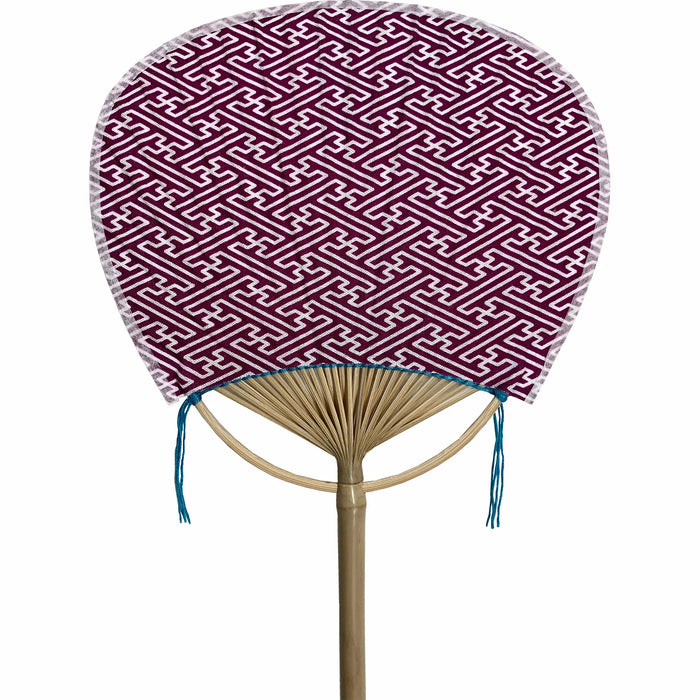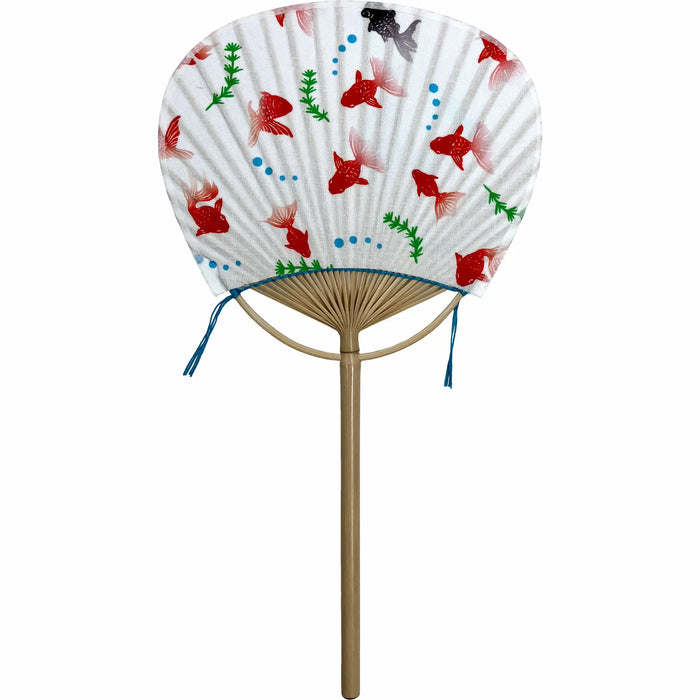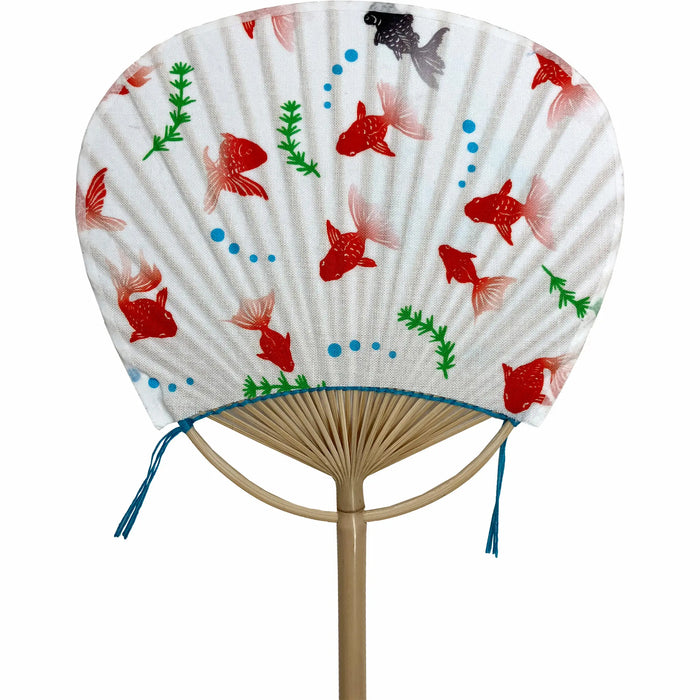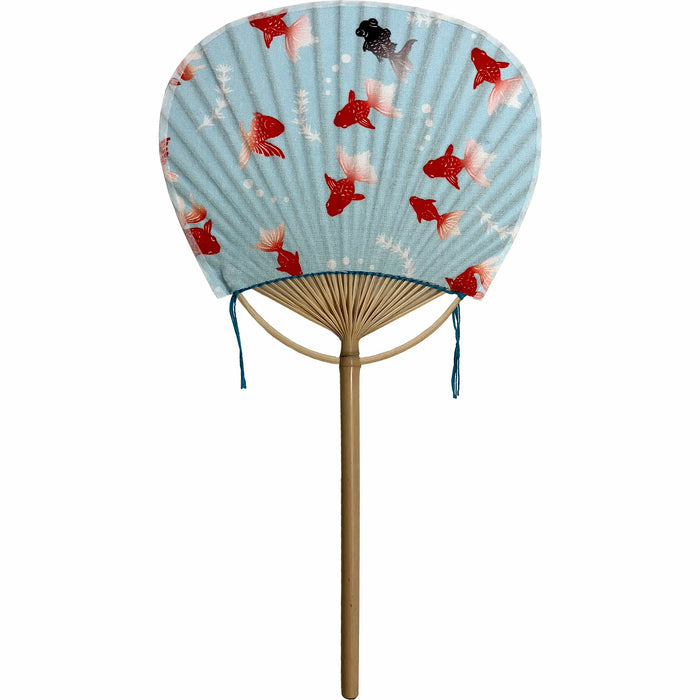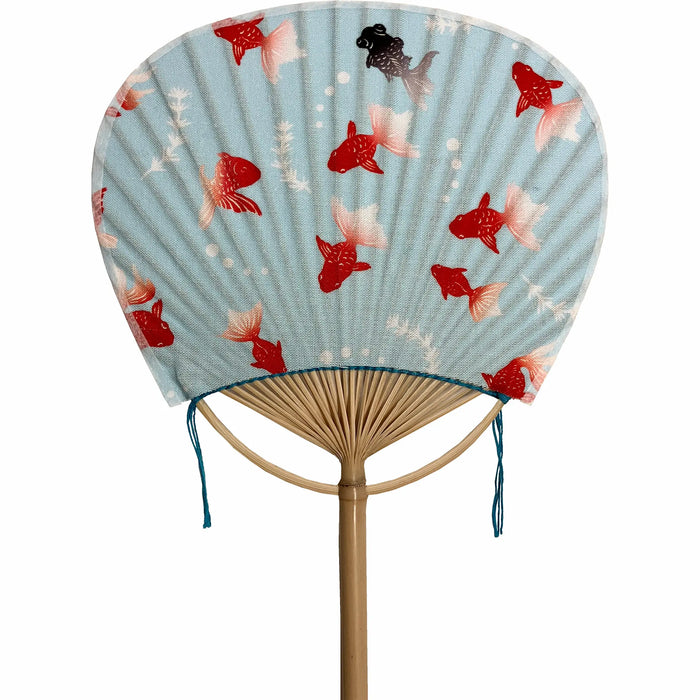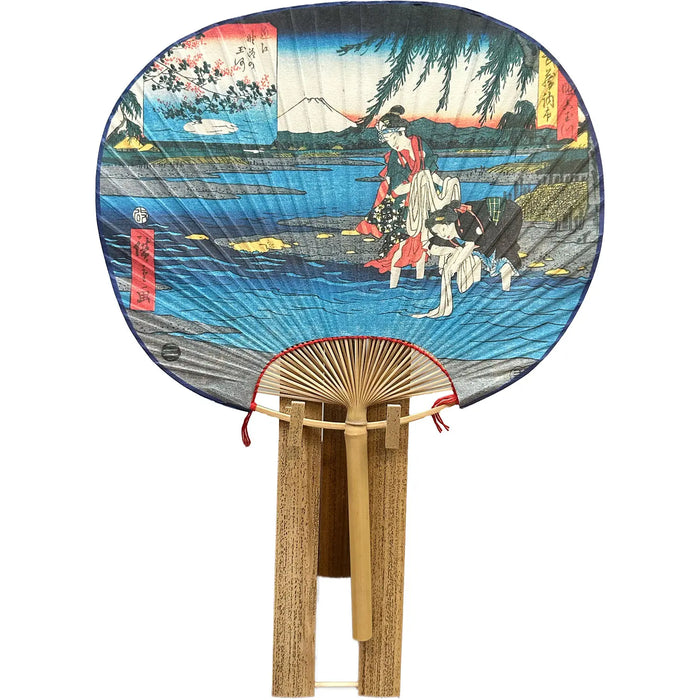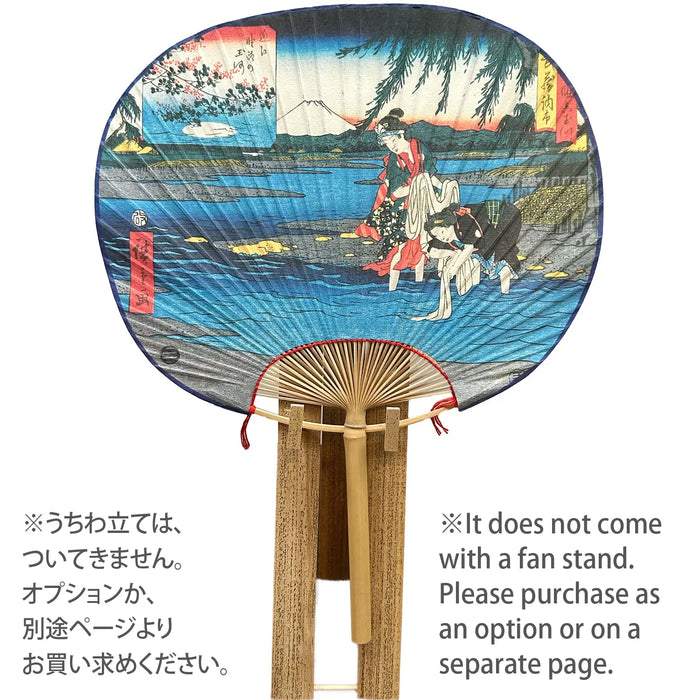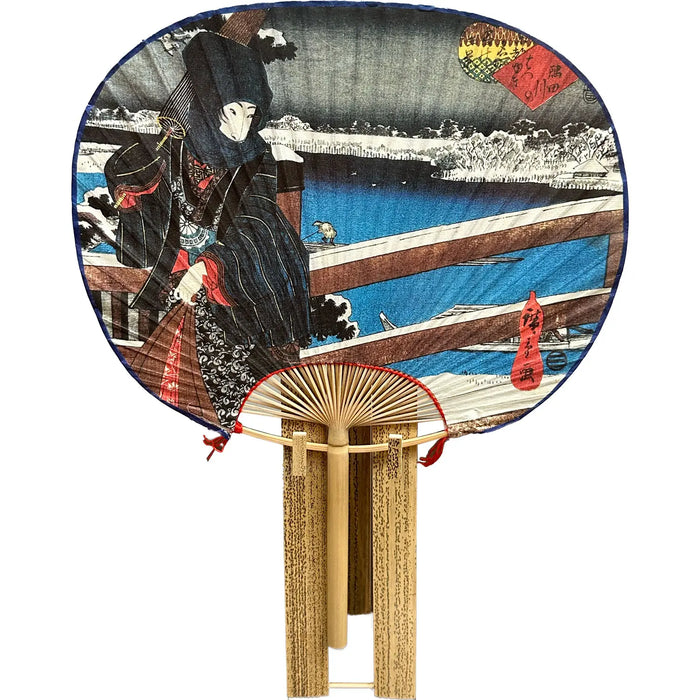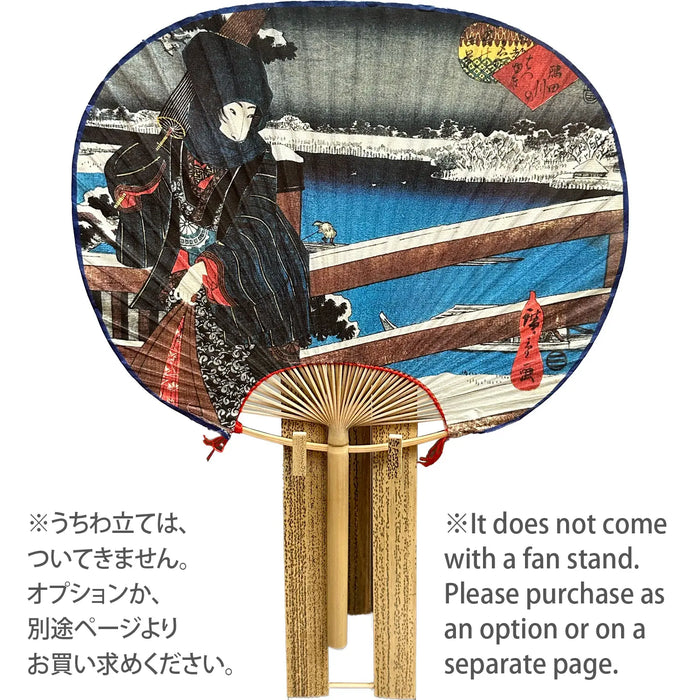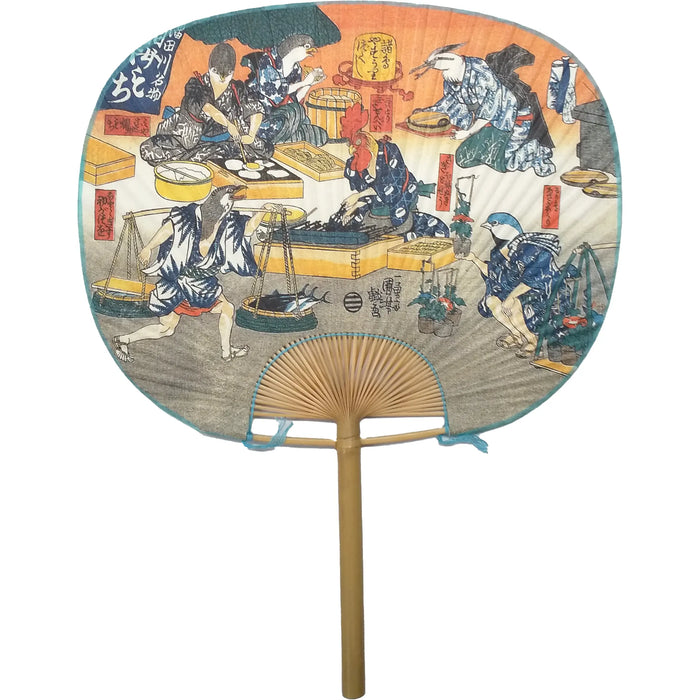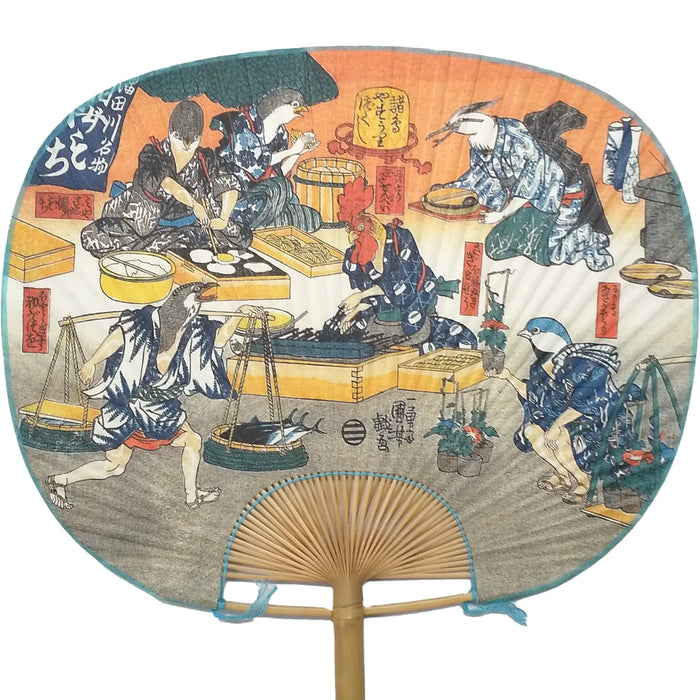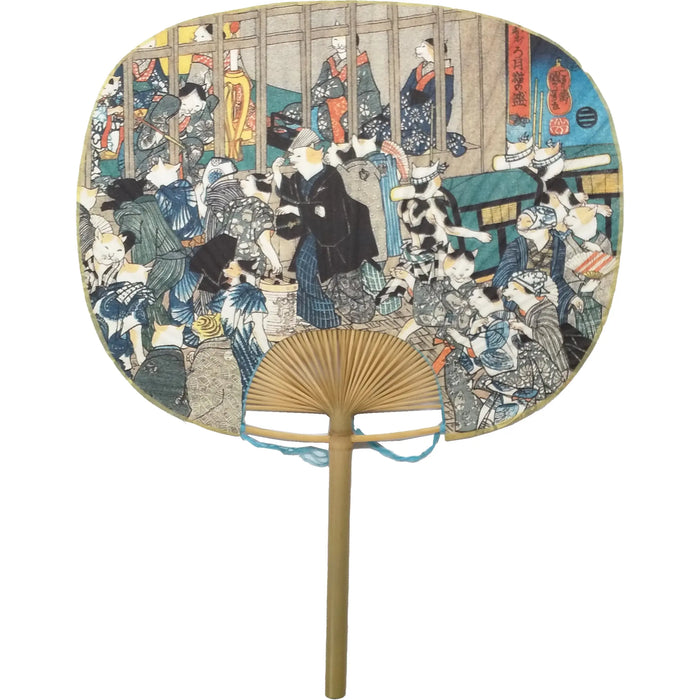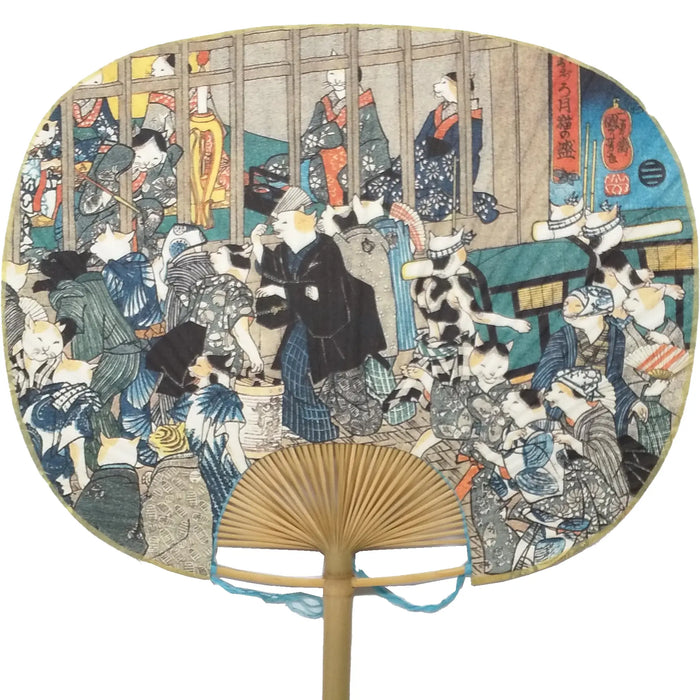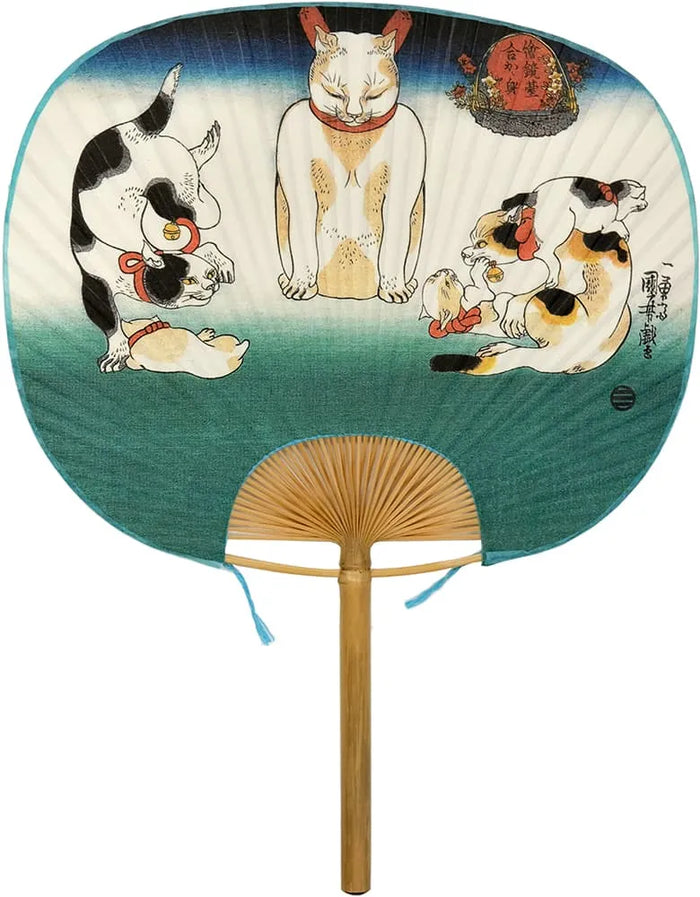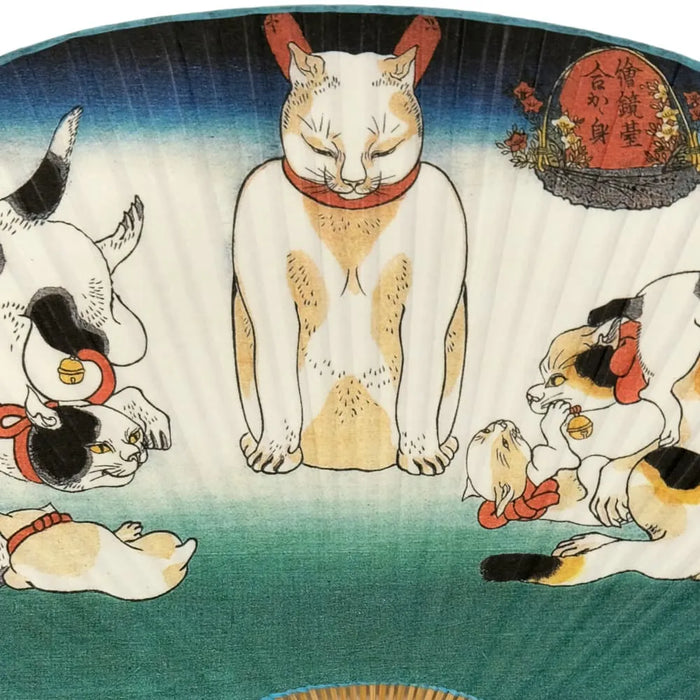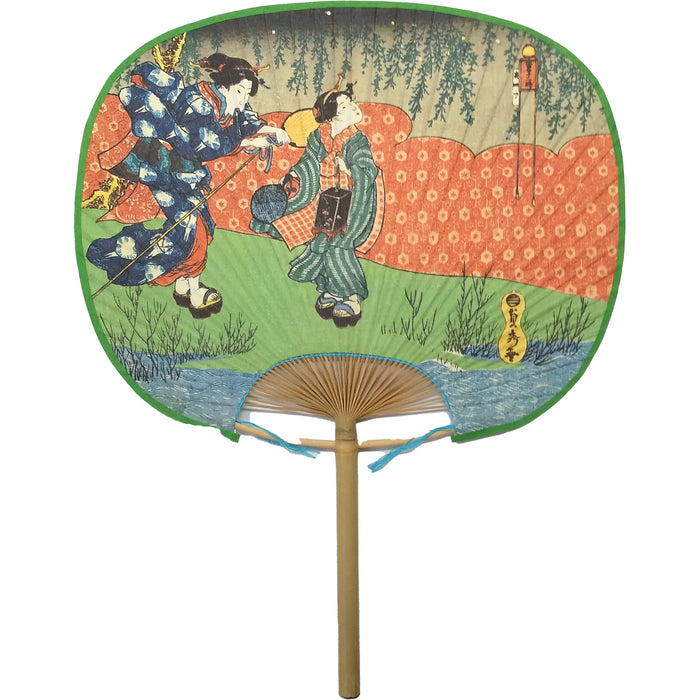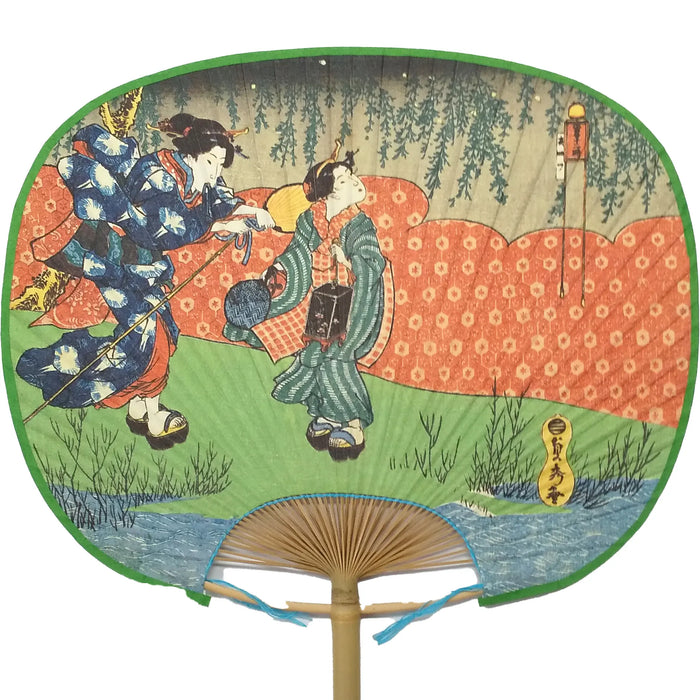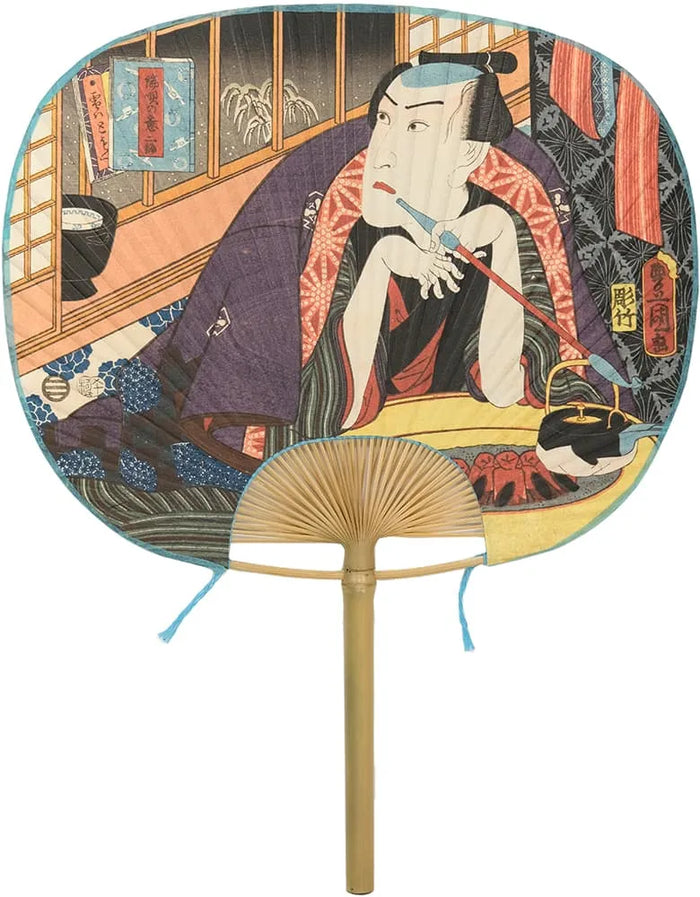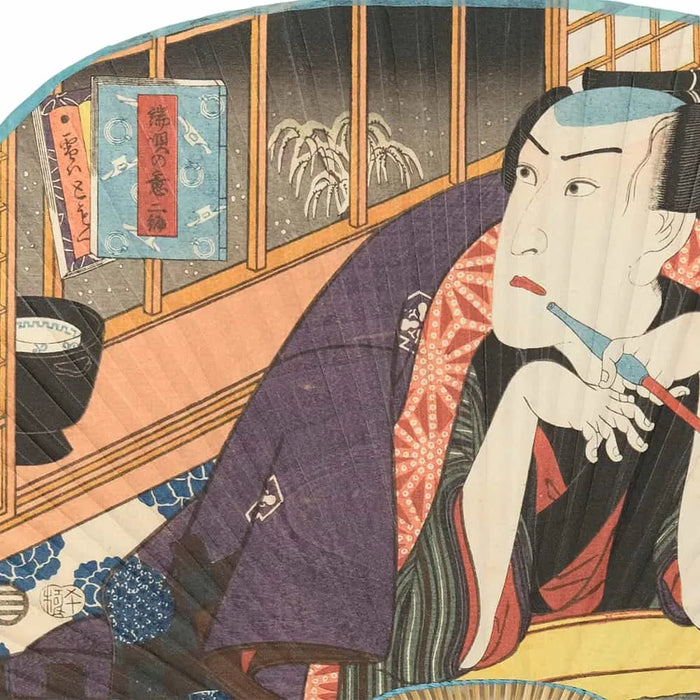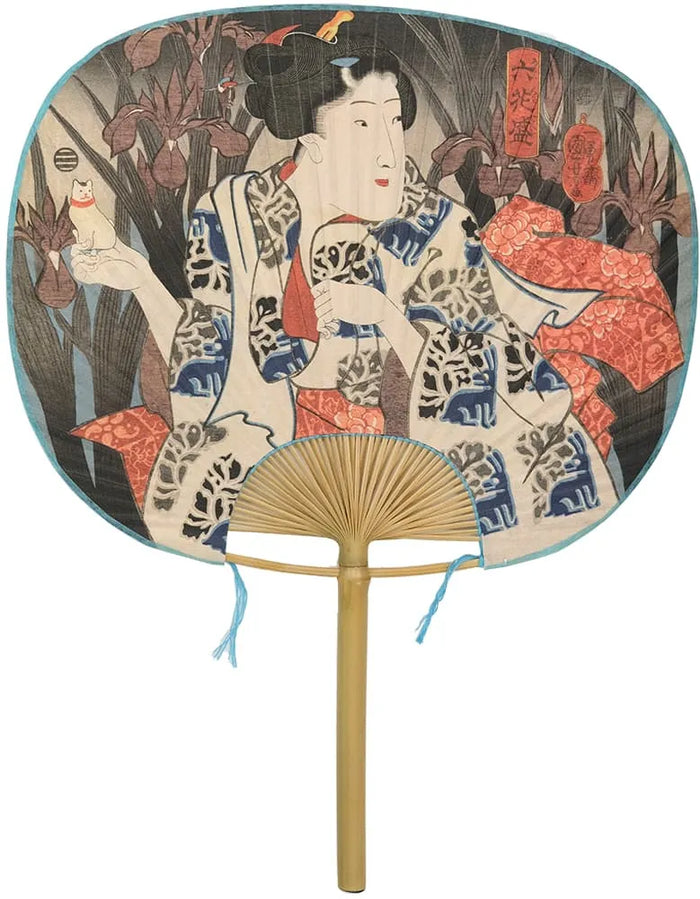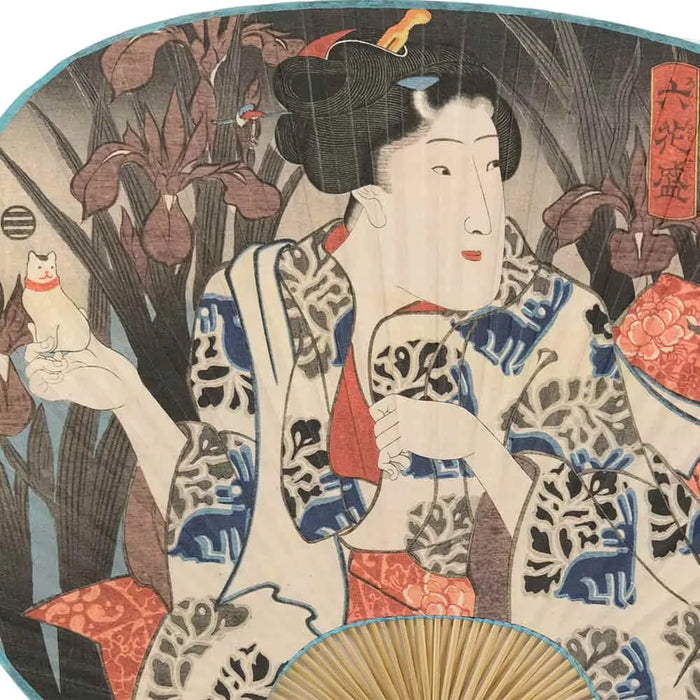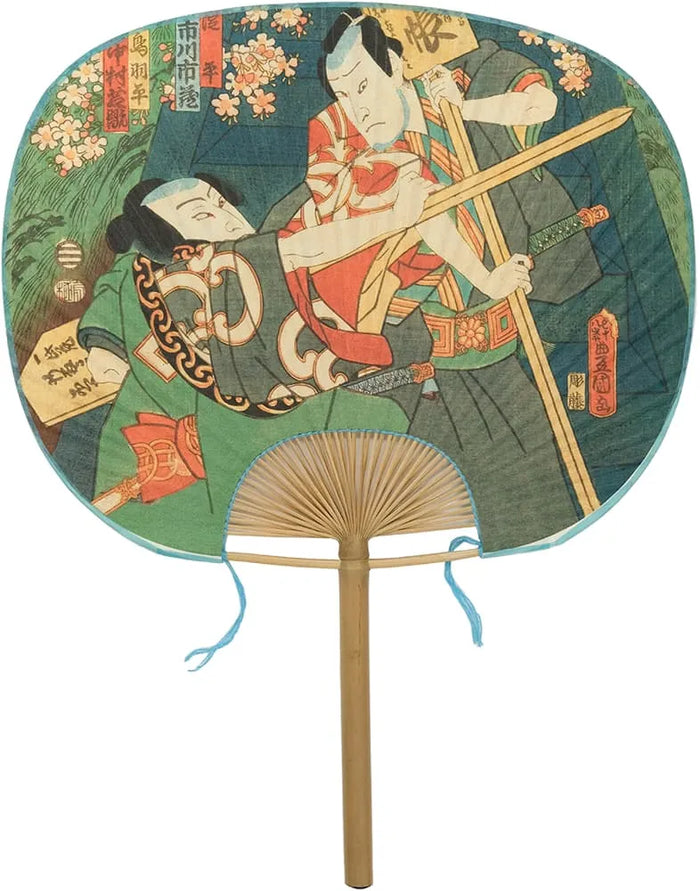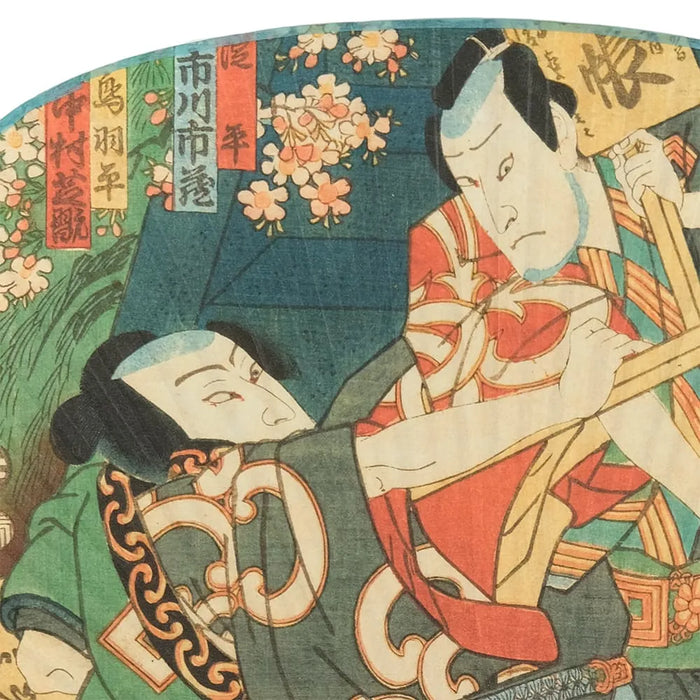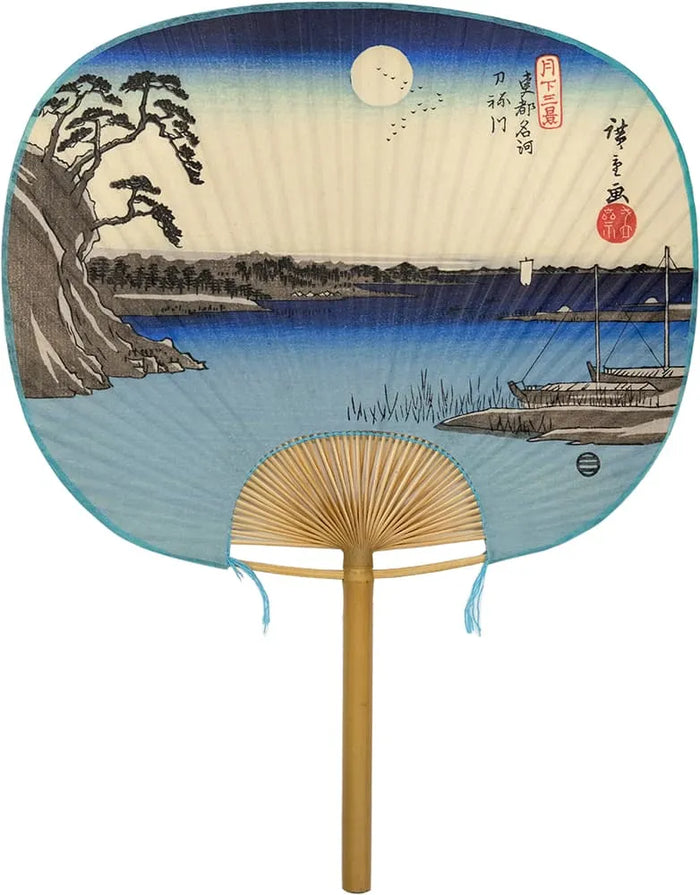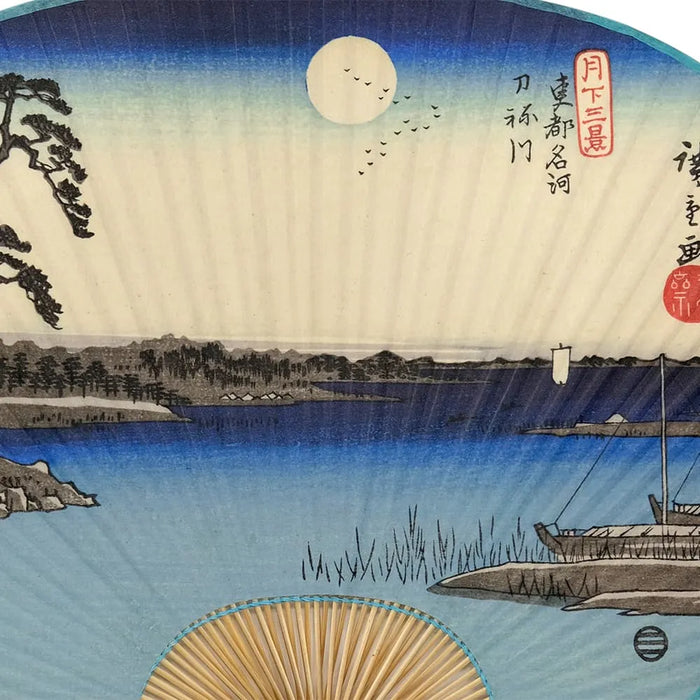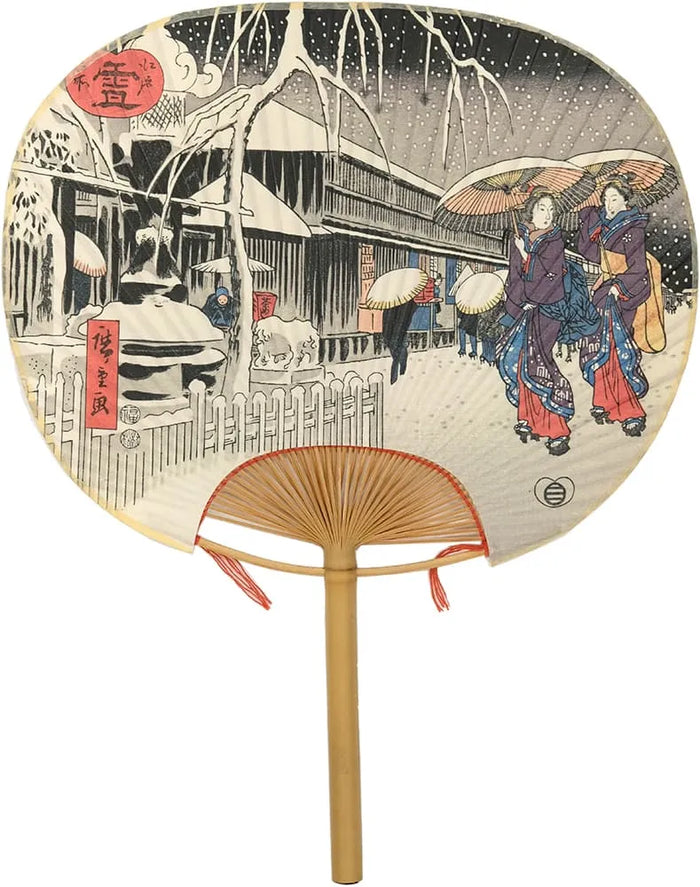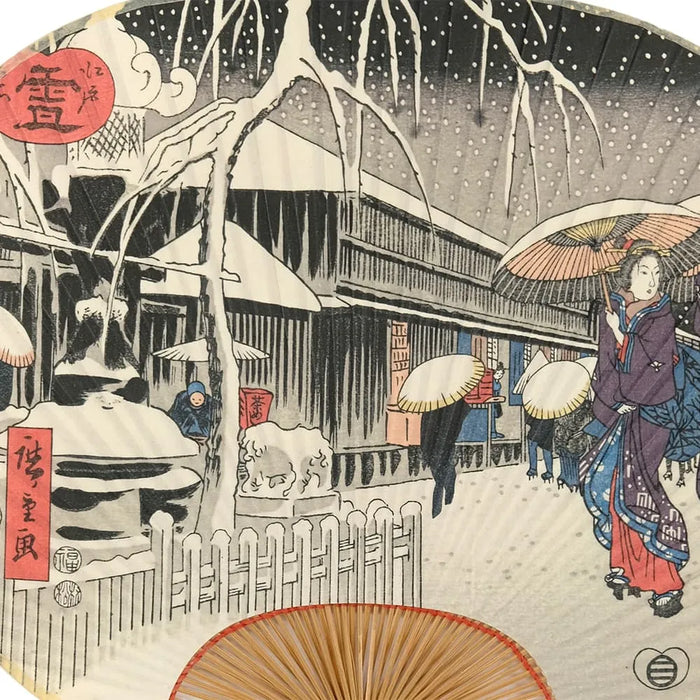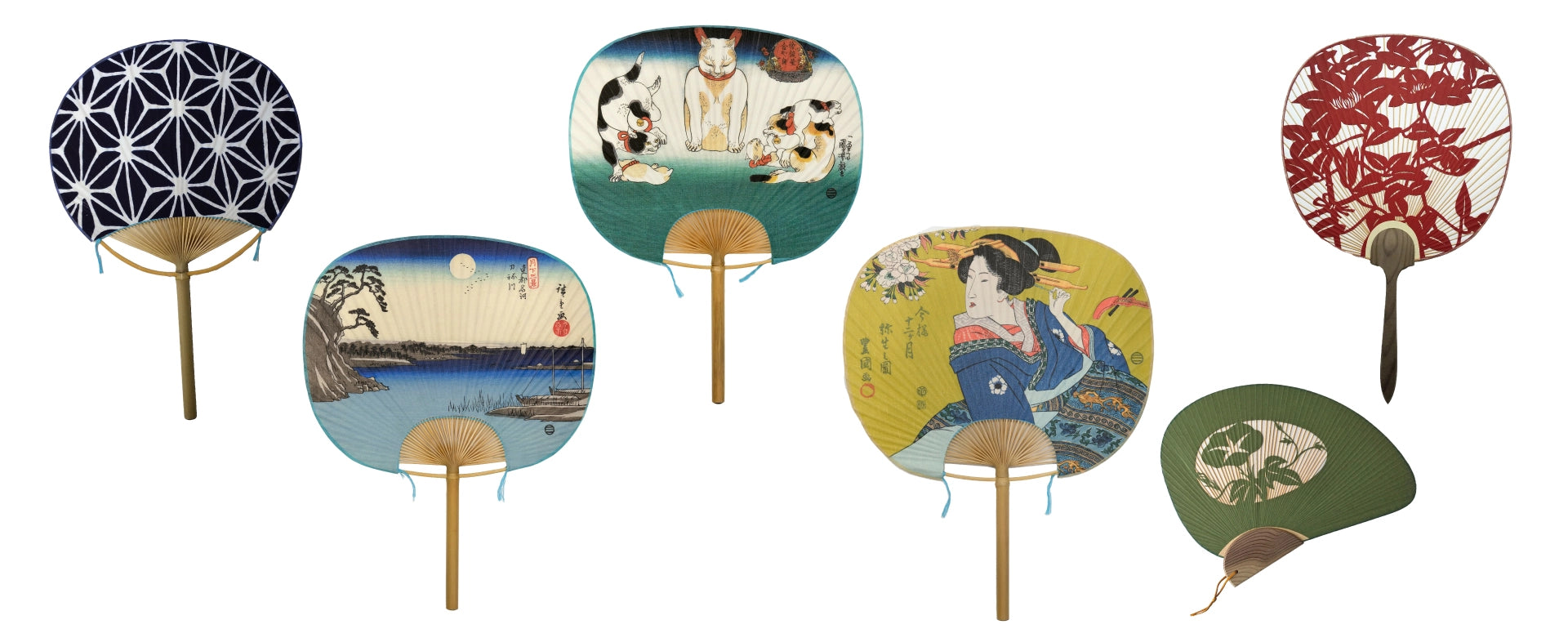The charm and history of Uchiwa as a traditional craft|Basic Knowledge of Japan's Three Major Uchiwa Crafts
Among the Uchiwa produced in Japan, there are three traditional crafts known as "Japan's Three Great Uchiwa. They are "Marugame Uchiwa" produced in Marugame City, Kagawa Prefecture, "Kyo Uchiwa" produced in Nantan City, Kyoto Prefecture, and "Boshu Uchiwa" produced in Tateyama City and Minamiboso City, Chiba Prefecture.
These uchiwa are designated as "traditional crafts" by the Minister of Economy, Trade and Industry. Traditional crafts are handicrafts made with traditional techniques, technologies, and raw materials. By meeting certain conditions, they are designated as traditional crafts by the government.
What are the characteristics of uchiwa that have been traditionally made in each region? In this article, we will introduce the production areas where Uchiwa fans have been produced in Japan since ancient times and the charm of each type of Uchiwa.
Japan's three most popular traditional crafts, Uchiwa
Traditional crafts have taken root in Japanese life since ancient times and continue to be made using traditional methods until the present day. The three regions known as "Japan's three major Uchiwa" are famous for the production of Uchiwa, which are designated as "traditional crafts" by the Minister of Economy, Trade and Industry. Here we introduce the production areas and characteristics of Marugame Uchiwa, Kyo Uchiwa, and Boshu Uchiwa.
Marugame Uchiwa
Marugame Uchiwa is an Uchiwa produced mainly in Marugame City, Kagawa Prefecture. It was designated as a traditional craft on May 14, 1997. The handle and fan face of the fan are made from a single piece of bamboo. The history of Marugame Uchiwa is said to have begun in the early Edo period. At that time, uchiwa fans with "gold" written in a circle on the red fan were invented as souvenirs for "Konpira mairi," a pilgrimage to Konpira Shrine. In the mid-Edo period (1603-1867), the Marugame clan encouraged the production of uchiwa fans as an in-house occupation. Against this background, fan making developed as a local industry. Although the demand for uchiwa in Japan has been decreasing with the changing times, the Marugame area continues to be a production center for uchiwa, accounting for 90% of the total uchiwa production in Japan.
Kyoto Uchiwa
Kyo-uchiwa are fans produced mainly in Kyoto City and Nantan City, Kyoto Prefecture. They were designated as a traditional craft on October 14, 1977. The main feature of Kyo-uchiwa is a structure called "Sapgara," in which the middle bone of the fan is separated from the handle. It is believed that Kyo-uchiwa originated from a line of uchiwa introduced from Korea during the period of the Northern and Southern Dynasties. The characteristics that lead to today's Kyo Uchiwa began with the Gosho Uchiwa of the Edo period (1603-1868). Gosho Uchiwa are uchiwa with designs drawn by painters of the Tosa and Kano schools who served the court, and the structure of the inserts was adopted. Some high-end Kyo-uchiwa have as many as 50 to 100 middle bones. Some Kyo-uchiwa are highly valued as works of art or crafts, and the high-end ones are mainly used as decorations.
Uchiwa with handmade Washi paper, Gourd, Green
- Regular
- ¥2,420
- Sale
- ¥2,420
- Regular
-
¥2,420
- Unit Price
- per
Uchiwa, handmade Washi paper, dark blue
- Regular
- ¥2,420
- Sale
- ¥2,420
- Regular
-
¥2,420
- Unit Price
- per
Clematis (red), all-engraving Miyako fan, handmade Japanese paper
- Regular
- ¥2,420
- Sale
- ¥2,420
- Regular
-
¥2,420
- Unit Price
- per
Fujin Raijin Tsu Uchiwa
- Regular
- ¥2,200
- Sale
- ¥2,200
- Regular
-
¥2,200
- Unit Price
- per
Hokusai Akafuji Miyako Uchiwa
- Regular
- ¥2,200
- Sale
- ¥2,200
- Regular
-
¥2,200
- Unit Price
- per
Hokusai Naniura Tsu Uchiwa
- Regular
- ¥2,200
- Sale
- ¥2,200
- Regular
-
¥2,200
- Unit Price
- per
Blue Kikyo in the Moon, handmade Japanese paper, Tsu Uchiwa
- Regular
- ¥1,430
- Sale
- ¥1,430
- Regular
-
¥1,430
- Unit Price
- per
So-engraving Tsu Uchiwa, handmade Japanese paper, pink
- Regular
- ¥1,760
- Sale
- ¥1,760
- Regular
-
¥1,760
- Unit Price
- per
Boshu Fans
Boshu Uchiwa are produced mainly in Tateyama City and Minami-Boso City, Chiba Prefecture. They were designated as a traditional craft on March 17, 2003. The two distinctive characteristics of Uchiwa fans are the "round handle," which uses round bamboo for the handle, and the "split bamboo," which is made by splitting the bamboo into small pieces to make the window (the part not covered with paper) of the Uchiwa. The raw material used for the round handle is a thin bamboo called "jyotake," which is processed to take advantage of its unique roundness. Up until around the Edo period, Boshu was a source of high-quality bamboo, which supported the production of uchiwa (Japanese fan) making. Uchiwa making is said to have started in this area around the Meiji period (1868-1912). Later, after the Great Kanto Earthquake, Tokyo's damaged uchiwa wholesalers moved to Boshu, leading to a full-scale expansion of production and establishing it as a local industry.
2024 Great Full Moon Fan No.2
- Regular
- ¥3,850
- Sale
- ¥3,850
- Regular
-
¥2,640
- Unit Price
- per
Mid full moon fan No.3
- Regular
- ¥2,200
- Sale
- ¥2,200
- Regular
-
¥2,200
- Unit Price
- per
Box and fan stand set for large-sized fans
- Regular
- ¥4,620
- Sale
- ¥4,620
- Regular
-
¥4,400
- Unit Price
- per
Tatoo for Uchiwa
- Regular
- ¥440
- Sale
- ¥440
- Regular
-
¥330
- Unit Price
- per
Mameuchi fan with bell, set of 6
- Regular
- ¥660
- Sale
- ¥660
- Regular
-
¥0
- Unit Price
- per
Mameuchi fan with bell, set of 6
- Regular
- ¥660
- Sale
- ¥660
- Regular
-
¥0
- Unit Price
- per
Mameuchi fan with bell, set of 6
- Regular
- ¥660
- Sale
- ¥660
- Regular
-
¥0
- Unit Price
- per
Mameuchi fan with bell, set of 6
- Regular
- ¥660
- Sale
- ¥660
- Regular
-
¥0
- Unit Price
- per
Mameuchi fan with bell, set of 6
- Regular
- ¥660
- Sale
- ¥660
- Regular
-
¥0
- Unit Price
- per
Mameuchi fan with bell, set of 6
- Regular
- ¥660
- Sale
- ¥660
- Regular
-
¥0
- Unit Price
- per
Mameuchi fan with bell, set of 6
- Regular
- ¥660
- Sale
- ¥660
- Regular
-
¥0
- Unit Price
- per
Mameuchi fan with bell, set of 6
- Regular
- ¥660
- Sale
- ¥660
- Regular
-
¥0
- Unit Price
- per
The Appeal of Uchiwa as a Traditional Craft
How about choosing an Uchiwa, which you usually use to keep cool, with particular attention to its place of origin? Here we introduce the appeal of uchiwa as a traditional craft, which can be recommended both as a practical product and as a fashion item that goes well with yukata (light cotton kimono).
Carefully handmade
Even today, many production processes of traditional craft Uchiwa are done by hand by craftsmen. A single fan is completed only after many delicate processes are completed. The advanced skills of skilled craftsmen are indispensable in this process. Traditional fan-making techniques and region-specific techniques have been passed down from generation to generation, and this is what makes Uchiwa fans so rich in flavor. The high quality that only handmade uchiwa fans can provide is one of the major attractions of traditional craft uchiwa fans.
You can enjoy the differences in production areas.
Each region has its own unique characteristics in terms of traditional crafts. The historical background and characteristics of the materials used differ from region to region, making it possible to enjoy the differences in design and production methods. In addition to the "Japan's Three Great Uchiwa" and other traditional crafts introduced earlier, there are other attractive uchiwa. Examples include mizuuchiwa (Gifu Prefecture), which are made of handmade Japanese paper, and shibuuchiwa (Kochi Prefecture), which are coated with persimmon tannin to prevent insects. Why not find your favorite uchiwa from among those produced in various parts of Japan?
History of Uchiwa
Uchiwa is now one of the traditional crafts. Its history is long, dating back to the Kofun period. Finally, we would like to introduce the history of Uchiwa.
Kofun Period
The prototype of the uchiwa was a tool called "shades," which came from China. The hai has a longer handle than today's uchiwa. It was used to hide the face of a person of high rank to show authority.
Asuka period - Kamakura period
Uchiwa were used to hide the faces of aristocrats and other people of high rank. They were made from a variety of materials, including bird feathers, to create colorful uchiwa fans. Gradually, uchiwa came to be used in daily life as a way to ward off insects.
Warring States Period
Gunpai Uchiwa (military fans) were used during battles. Gundan Uchiwa is used by warlords to direct their troops in battle. In modern times, it is used as a tool for the gyoji, the Sumo wrestler in charge.
Edo Period
In the Edo period (1603-1867), uchiwa became popular among the general public. They came to be widely used in daily life, such as for keeping cool and for starting fires for cooking, as is the case today. Uchiwa fans with ukiyoe paintings of beautiful women and Kabuki actors were very popular at that time. Uchiwa became popular not only as a tool but also as a work of art.
Ukiyoe Hiroshige "Musashi Chofu / Tama River", Edo Ukiyoe, Rokutama River, Japan
- Regular
- ¥5,500
- Sale
- ¥5,500
- Regular
-
- Unit Price
- per
Ukiyoe Hiroshige Sumida River Hatsuyuki
- Regular
- ¥5,500
- Sale
- ¥5,500
- Regular
-
- Unit Price
- per
Ukiyoe, Ukiyoe, Utagawa Kuniyoshi-Morotori yasuri zukuri
- Regular
- ¥5,500
- Sale
- ¥5,500
- Regular
-
- Unit Price
- per
Ukiyoe, Ukiyoe, Kuniyoshi Utagawa, Oborozuki Neko no Mori
- Regular
- ¥5,500
- Sale
- ¥5,500
- Regular
-
- Unit Price
- per
Edo fan, Ukiyoe, Kuniyoshi, painted mirror stand, Gogaga body
- Regular
- ¥5,500
- Sale
- ¥5,500
- Regular
-
¥4,400
- Unit Price
- per
Ukiyoe Ukiyoe Sadahide Firefly hunting
- Regular
- ¥5,500
- Sale
- ¥5,500
- Regular
-
- Unit Price
- per
Ukiyoe Toyokuni carved bamboo
- Regular
- ¥5,500
- Sale
- ¥5,500
- Regular
-
- Unit Price
- per
Ukiyoe, Kuniyoshi, Rokka-mori
- Regular
- ¥5,500
- Sale
- ¥5,500
- Regular
-
- Unit Price
- per
Ukiyoe Toyokuni, carved wisteria
- Regular
- ¥5,500
- Sale
- ¥5,500
- Regular
-
- Unit Price
- per
Ukiyoe Hiroshige Tonegawa
- Regular
- ¥5,500
- Sale
- ¥5,500
- Regular
-
- Unit Price
- per
Ukiyoe Hiroshige Snow
- Regular
- ¥5,500
- Sale
- ¥5,500
- Regular
-
- Unit Price
- per
Box and fan stand set for large-sized fans
- Regular
- ¥4,620
- Sale
- ¥4,620
- Regular
-
¥4,400
- Unit Price
- per
Present
Today, uchiwa fans are made in many regions of Japan. Uchiwa have become familiar to many people as a tool deeply rooted in daily life. In addition, there are more and more new uses for uchiwa, such as printing advertisements on them for use as promotional goods and novelties, or as cheerleading goods for idols. Uchiwa, which have been used in Japan since ancient times, are also favored as auspicious gifts.
Uchiwa, a traditional craft, makes a wonderful summer gift.
So far, we have introduced the charm of uchiwa, a traditional craft made in various parts of Japan. In addition to the "Japan's Three Great Uchiwa Crafts," there are many other attractive traditional crafts in Japan. A long-established company founded in Tensho 18IbasenWe deal in "Edo Uchiwa" and "Miyako Uchiwa," which were popular among the common people in the Edo period (1603-1868). In the late Edo period, we became the publisher of ukiyoe prints by popular artists such as Hiroshige Utagawa and Toyokuni Utagawa, and produced a wide variety of uchiwa fans. These uchiwa are handmade by craftsmen using the same techniques used in those days.IbasenUchiwa fans made by the "Edo" craftsmen are recommended not only for use with yukata (summer kimonos) but also as gifts for your loved ones. Please visit our online store to see our pride and joy of "Edo Uchiwa" and "Miyako Uchiwa".

